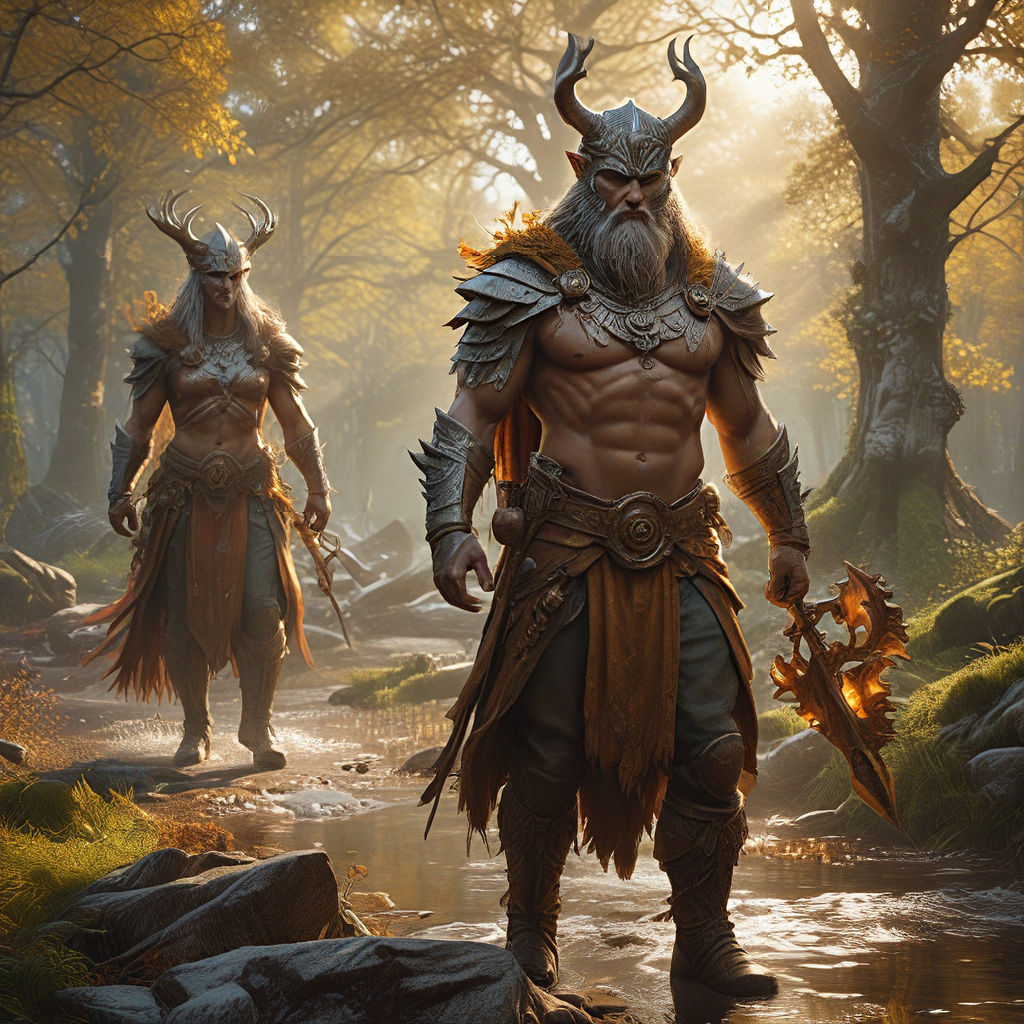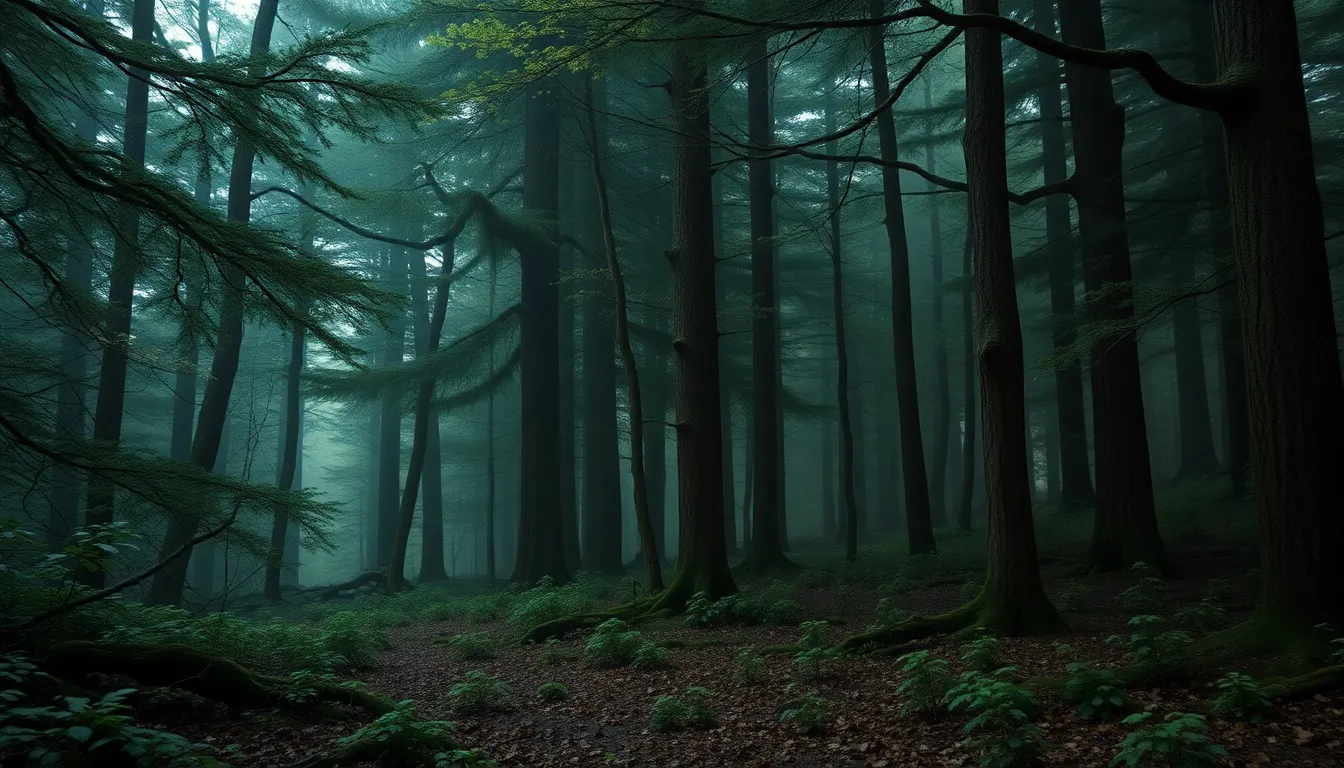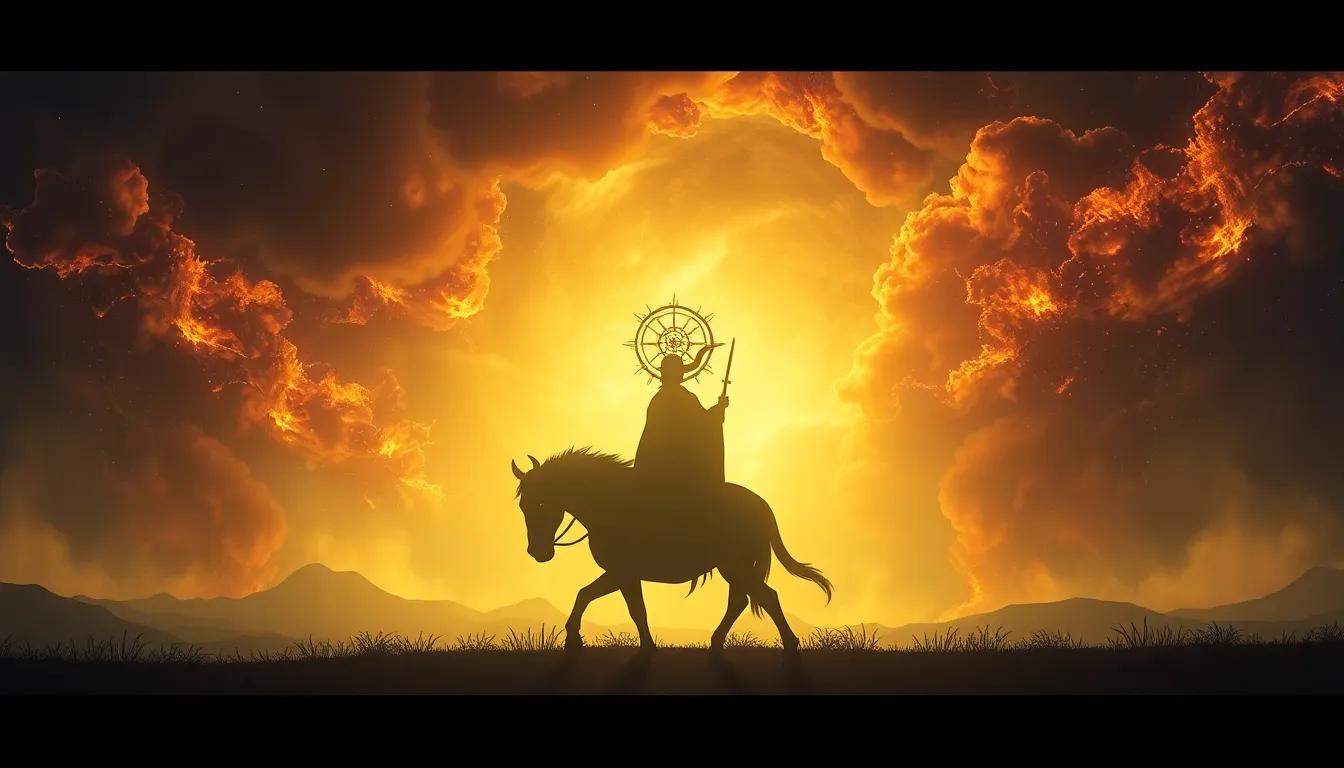Baltic Mythology: An Introduction
Baltic mythology, a rich tapestry of ancient beliefs and stories, offers a fascinating glimpse into the worldview of the ancient Baltic people. This mythology, once widespread across the Baltic region, encompassing present-day Lithuania, Latvia, and Estonia, has endured through the ages, preserved in folklore, songs, and rituals. Unlike the more familiar Greek or Roman mythologies, Baltic mythology is less well-known but equally captivating. It presents a unique perspective on nature, the cosmos, and the human condition, reflecting the deep reverence for the forces of nature and the cyclical rhythms of life.
Guardians of the Seasons
In Baltic mythology, the seasons are not merely periods of time but are personified by powerful deities who embody their essence. These deities, known as "dievas" (gods) and "dieves" (goddesses), play a vital role in the lives of the Baltic people, influencing everything from agriculture and weather to health and prosperity.
-
Pavasaris (Spring): This god, often depicted as a young man with blooming flowers in his hair, represents the renewal and rebirth that comes with spring. He is associated with growth, fertility, and the awakening of nature after the long winter.
-
Vasara (Summer): This goddess is often portrayed as a beautiful woman adorned with summer flowers and fruits. She embodies the warmth, abundance, and joy of summer, a time for celebration and harvest.
-
Rudens (Autumn): This god, often depicted as an older man with a harvest crown, represents the transition from summer's abundance to the quietude of winter. He is associated with the harvest, the gathering of bounty, and the preparation for the coming cold.
- Žiema (Winter): This goddess, often portrayed as a stern woman with icy eyes and a white shawl, embodies the cold, harsh realities of winter. She is associated with the slumber of nature, the stillness of the land, and the introspection that comes with the long nights.
The Role of Dievas in Baltic Mythology
Dievas, the supreme deity in Baltic mythology, represents the sky god and the ultimate source of creation. He is the embodiment of light, order, and justice, responsible for maintaining the cosmic balance and ensuring the harmony of the world. Unlike many other pantheons, there is no concept of a hell or evil in Baltic mythology. This makes Dievas more akin to a benevolent creator deity than a vengeful god.
Dievas is not directly involved in the day-to-day affairs of humans, but he is a powerful force that shapes the world and influences the lives of people. He is often depicted as a wise and benevolent ruler, observing the world from his celestial throne.
Perkūns: The God of Thunder and Storms
Perkūns, the most powerful and revered of the Baltic gods after Dievas, is the fierce god of thunder, lightning, and storms. He is a powerful force of nature, bringing both destruction and renewal. Perkūns is often depicted as a mighty warrior with a hammer or axe, striking the clouds and unleashing his fury. He is a symbol of power, strength, and protection, reminding people of the awe-inspiring power of nature.
Perkūns is known for his fiery temper and his tendency to punish those who disobey the divine laws. He is also a protector of the people, safeguarding them from evil spirits and hostile forces. His presence in the sky is a reminder of the power and unpredictability of nature, a force to be both feared and respected.
The Divine Guardians of the Elements
Beyond the deities of the seasons, Baltic mythology features a pantheon of gods and goddesses responsible for the elements. These divinities govern the forces of nature, controlling the weather, the sea, and the land.
Jūratė: The Goddess of the Sea
Jūratė, a powerful and enigmatic goddess, holds dominion over the Baltic Sea. She is one of the most beloved and revered deities in Baltic mythology, embodying the mystery, power, and beauty of the ocean. Jūratė is often depicted as a beautiful woman, adorned with pearls and seaweed, residing in a magnificent amber palace beneath the waves.
According to legend, Jūratė fell in love with a mortal fisherman named Kastytis. Their love was forbidden, as the gods and mortals were not meant to mingle. Despite this, they defied the divine laws and lived a life of happiness together. However, their love was short-lived. The envious god Perkūns, angered by their transgression, struck down Kastytis with a bolt of lightning, leaving Jūratė heartbroken and alone.
Filled with grief, Jūratė retreated to her underwater palace, where she remained for centuries, mourning the loss of her beloved. She is said to be a guardian of the sea, protecting sailors and fishermen from harm, but also a symbol of the unpredictable nature of the ocean, capable of both beauty and destruction. The amber palace, now said to be hidden beneath the waves, is a reminder of Jūratė's love and the eternal power of the sea.
Laima: The Goddess of Fate and Destiny
Laima, the goddess of fate and destiny, plays a crucial role in Baltic mythology. She embodies the power of destiny and the unpredictable nature of life. Often depicted as a woman with a spindle and a thread, Laima spins the web of life, determining the course of every individual's existence.
At birth, Laima stands by the cradle, weaving the threads of life, determining the individual's fate. She is believed to grant or withhold blessings, influence health, wealth, and happiness. According to Baltic beliefs, Laima's actions are not always benevolent, and her decisions are often influenced by the individual's actions and choices.
Laima's role in Baltic mythology highlights the complex relationship between destiny and free will. While she shapes the course of life, individuals still have the power to influence their fate through their actions and choices. The concept of Laima serves as a reminder that life is a journey filled with both joy and sorrow, and that every moment is a reflection of the threads woven by fate.
Theories on the Origins of Baltic Mythology
The origins of Baltic mythology are deeply intertwined with the history and culture of the Baltic people. While specific origins remain shrouded in mystery, experts propose several theories attempting to explain this ancient belief system. One prominent theory suggests that Baltic mythology developed from a combination of indigenous beliefs and influences from other Indo-European cultures.
Some scholars suggest that the Baltic people, as part of the Indo-European family, shared a common mythological heritage with other Indo-European groups. This shared heritage could explain the similarities between Baltic mythology and other Indo-European mythologies such as those of the Greeks, Romans, and Slavs.
Influence of Indo-European Mythology
Baltic mythology, with its rich tapestry of gods, goddesses, and tales, demonstrates a strong influence from Indo-European mythology. This shared heritage is evident in numerous similarities between Baltic mythology and other Indo-European mythologies, including those of the Greeks, Romans, and Slavs.
For example, the Baltic god Perkūns, the god of thunder and lightning, shares striking resemblances with the Greek god Zeus and the Roman god Jupiter. The emphasis on a supreme sky god in both Baltic and other Indo-European mythologies reflects a common Indo-European ancestor with a shared understanding of the cosmos.
However, Baltic mythology showcases unique characteristics that distinguish it from other Indo-European mythologies. The lack of a clear underworld or concept of evil in Baltic mythology is a striking difference compared to other Indo-European mythologies. The Baltic people's reverence for nature, seen in the powerful deities representing the seasons and elements, also sets Baltic mythology apart.
Relationship between Baltic Mythology and Folklore
Baltic mythology is intricately interwoven with the folklore of the Baltic people. The tales, songs, and customs passed down through generations provide valuable insight into the ancient beliefs and practices. These stories often depict the actions of the gods, the challenges faced by heroes, and the importance of honoring the natural world.
Folklore serves as a vital repository of Baltic mythology, preserving the essence of ancient beliefs and traditions. It offers a window into the worldview of the Baltic people, their understanding of the universe, and their relationship with nature. The stories, rituals, and songs embedded in folklore continue to shape the cultural identity of the Baltic people, even today.
FAQ
Q: What is the most important concept in Baltic mythology?
A: The most important concept in Baltic mythology is the idea of balance and harmony. The gods and goddesses represent the different forces of nature, and their interactions are essential for maintaining this balance.
Q: How does Baltic mythology differ from other Indo-European mythologies?
A: Unlike other Indo-European mythologies, Baltic mythology lacks a strong emphasis on a concept of hell or evil. Instead, it emphasizes the importance of nature, the seasons, and the cyclical nature of life.
Q: What is the role of folklore in Baltic mythology?
A: Folklore plays a crucial role in preserving the stories and beliefs of Baltic mythology. It provides valuable insight into the ancient worldview of the Baltic people.
Q: Is Baltic mythology still relevant today?
A: While Baltic mythology is ancient, it remains relevant today through the traditions, customs, and stories that continue to shape the cultural identity of the Baltic people. It also serves as a source of inspiration for artists, writers, and musicians.




